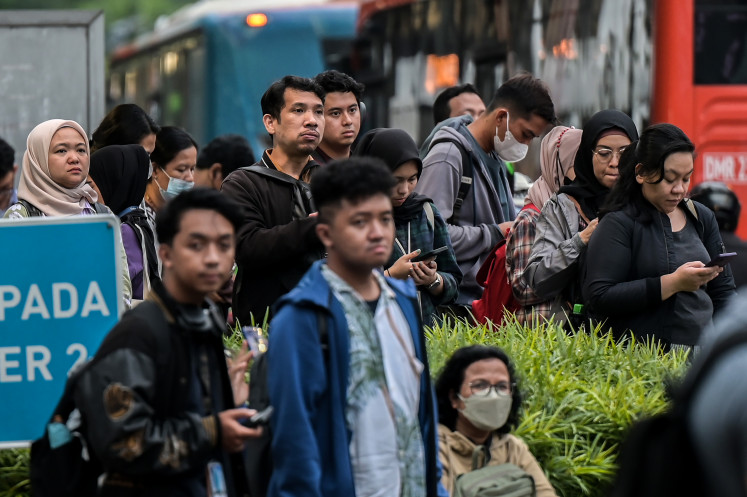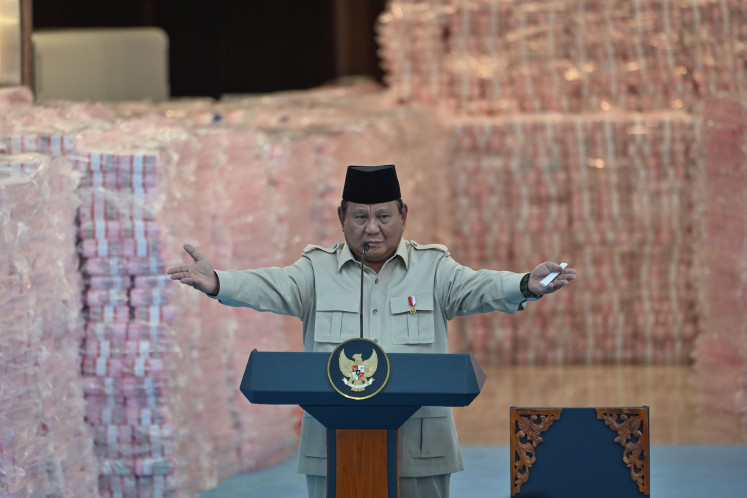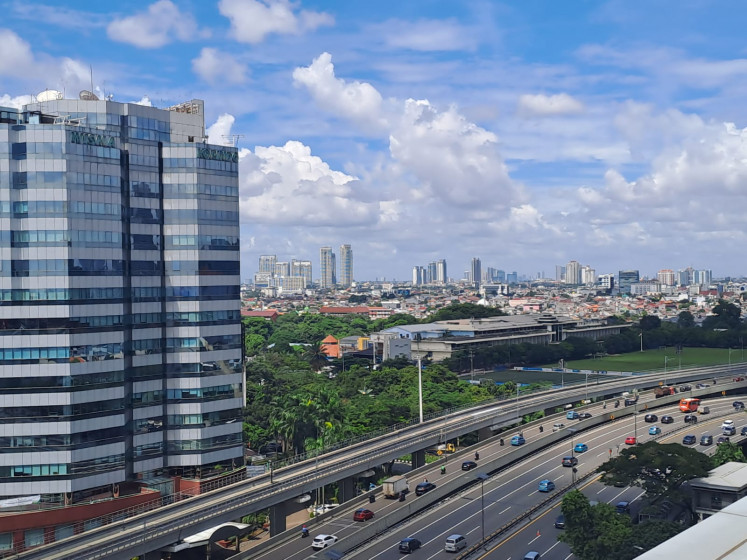Popular Reads
Top Results
Can't find what you're looking for?
View all search resultsPopular Reads
Top Results
Can't find what you're looking for?
View all search resultsCover Story: Bali Arts Festival - “The annual celebration of Balinese arts and culture”
The powerful and rhythmic beat from the Balinese marching band Ketug Bumi brightened the area around Renon field as soon as President Joko “Jokowi” Widodo hit the traditional wooden kulkul bell marking the opening of the much-awaited, greatest arts festival on the island – the month-long Bali Arts Festival
Change text size
Gift Premium Articles
to Anyone
The powerful and rhythmic beat from the Balinese marching band Ketug Bumi brightened the area around Renon field as soon as President Joko “Jokowi” Widodo hit the traditional wooden kulkul bell marking the opening of the much-awaited, greatest arts festival on the island – the month-long Bali Arts Festival.
A remarkable performance of the Siwa Natharaja dance by Indonesian Fine Arts Institute (ISI) Denpasar followed Ketug Bumi, bringing cheer to the thousands of people who flocked the area where the art street parade was taking place, seemingly without care for the bright sun overhead. The Siwa Natharaja dance is the official symbol of the annual Bali Arts Festival. According to Hindu mythology, the whole universe was created by Lord Shiva performing a dance, thus underlining the importance of arts in the Hindu belief system.
The ISI Denpasar performance was only the beginning of the festivities. The richness of Balinese arts and culture was well displayed in a colorful street presentation by thousands of artists from across Bali and beyond, all encircling the Bajra Sandhi monument, a museum built in the form of a giant genta — the sacred bell used by Hindu high priests.
Klungkung regency started the parade, displaying its signature double woven cloth from Nusa Penida islet, cepuk rangrang, while presenting the heroic history of the Klungkung people in a fragment from the 1849 Kusamba war against the Dutch. Other regencies followed in the street parade, all displaying their signature identities, from their best Balinese attire to dances and souvenirs.
In addition to participants from across Bali, the street parade also featured performances from other Indonesian provinces, such as East Nusa Tenggara, and overseas, including France and India.
The French delegation in this year’s 38th Bali Arts Festival also marked the closing of Printemps Francais 2016, a French art festival being held across Indonesia since last month, while performing a giant puppet show of Les Grandes Persones.
“For me, the Bali Arts Festival is not solely a people’s party or an arts festival. It is also an event that has a cultural function, an educational function, and the function of driving the community economy, especially that of the Balinese community,” Jokowi said in his speech.
The Bali Arts Festival was first held in 1979, when then Bali governor Ida Bagus Mantra decided the government should provide the space and funding to promote local culture and nurture an aesthetic community.

The month-long festival is focused around the Bali Arts Center and traditional Balinese arts performances will be held on the three stages there every day until July 9. The event also features art and handicraft exhibitions, competitions, seminars, movie screenings and culinary events where people can enjoy authentic Balinese food.
There are at least 15,000 artists participating from across Bali, as well as participants from 11 other areas of the country, including Jakarta, East Java, East Nusa Tenggara and Blitar, as well as nine countries, including the US, India, France and the UK.
Culture and Education Minister Anies Baswedan conveyed his awe over the festival, which he said was a dazzling display of artistic expression alongside consistent community appreciation of the artists.
“There are not many place in the world where cultural expression really becomes part of life,” he said.
Bali Governor Made Mangku Pastika said that the festival was aimed at exploring, preserving and developing traditional arts that were an integral part of the Balinese people’s lives. “This event is strategic to revitalizing the value of art so that it remains alive and functioning in the community amid the challenges of globalization.”
Pastika continued, saying that the basic idea of the event was to maintain the place of Balinese culture based on Hindu religion as the sustainable cultural capital of the island.
Christophe Evette, coordinator of Les Grandes Persones from France, said: “We are very happy to perform here in Bali. It is a very good experience as we have known for so many years about Bali’s puppetry and mask creators. What we have seen from the dancers, performers and musicians is very, very impressive for us.”










